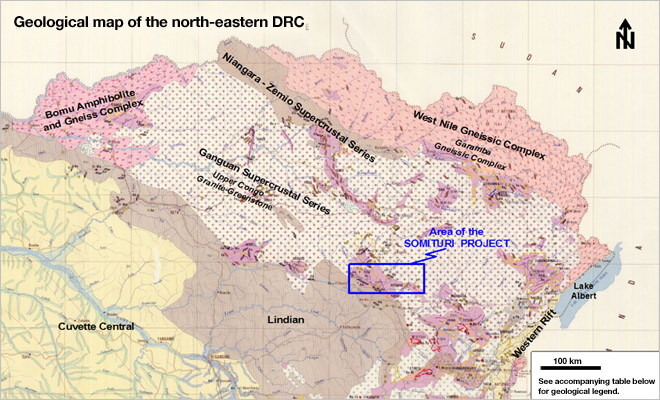Geology & Mineralization
The Somituri Exploitation Licences are located in the Archaean Ngayu Greenstone Belt. Gold on PE 9691 (location of the Adumbi Deposit) is hosted within quartz veins in sheared Upper Kibalian formation comprised of a chemical metasedimentary unit that includes banded iron formation ("BIF"), tuffaceous metasedimentary rocks and greywacke. Similar rock types, as well as occurrences of massive haematite are present on 6 of the remaining PEs of the Somituri Project. One PE is underlain predominantly by basement orthogneiss and granites. The youngest lithology on the property is the Post Karoo, essentially a lateritic cuiriasse.

Also present within the Kibalian formation is quartzitic sandstone often with pyrite, pellitic and graphitic shales and horizons intercalated with fine quartzitic sandstone, banded sericite schists, quartz-sericite schists, phyllites, spotted schists and red banded shale. Gold bearing quartz veins are hosted within the Kibalian formation.
Unconformably overlying the Kibalian, immediately to the southwest of the Somituri Project Exploitation Licences, is the younger Lindian formation. The Lindian is composed of black argillite and sandstone intercalated with arkosic sandstone, red micaceous sandstone, conglomerates and a number of basic dykes. Lying on the Lindian is Karoo formation of black shales, elluvial and alluvial deposits.
Gold is associated with sulphide mineralization within the Archaean Kibalian formation of the Ngayu Greenstone Belt. Gold generally occurs with quartz veins; host rocks to the quartz veins include banded iron formation, metasedimentary and tuffaceous rocks.
Additional information about the Somituri Project:
| Overview | Geology | Development to Date | Exploration Plan |




